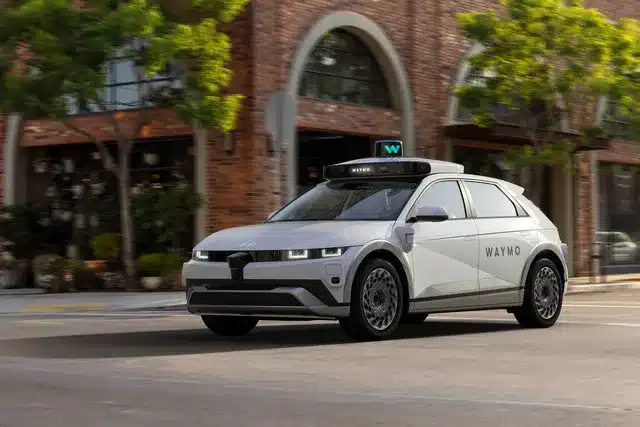Waymo is Adding Hyundai’s Ioniq 5 to its Robotaxi Fleet
Waymo, the undisputed robotaxi leader, announced plans to incorporate the exciting Hyundai Ioniq 5 into its robotaxi fleet as part of a “multi-year, strategic” partnership with Hyundai Motor Group. The Ioniq 5 will join Waymo’s autonomous vehicle lineup, but not before undergoing rigorous on-road testing with Waymo’s self-driving technology, set to begin in late 2025. Although no specific timeline was given for when the Ioniq 5 will start transporting passengers, Waymo hinted that it would take “years” after testing is completed.
The Hyundai Ioniq 5 vehicles destined for Waymo’s fleet will be produced at Hyundai’s $7.6 billion Metaplant in Georgia, which is currently nearing completion. The companies have agreed to manufacture a significant number of Waymo-equipped electric Hyundais at this facility over the course of several years, indicating a long-term collaboration between the two companies.

In the world of robotaxis, uptime is a critical metric, as vehicles make money while on the road, not while plugged into a charger. The Hyundai Ioniq 5, with its 300+ miles of range and 800-volt architecture, is well-suited for this task. Its advanced charging system enables it to go from 10% to 80% in just 18 minutes when using a 350kW fast charger, making it a valuable asset for Waymo as it continues to work toward profitability. These quick charging capabilities allow the Ioniq 5 to maximize time on the road and minimize downtime, a key consideration for Waymo’s robotaxi operations.
Since its release in late 2021, the Ioniq 5 has been highly praised and won numerous awards. It’s one of the bestselling EVs in the market, with 30,000 units sold in the U.S. this year alone. The success of the Ioniq 5 has contributed to Hyundai and its sister brand Kia challenging GM for the position of the second-largest EV seller in the U.S.
Waymo currently operates a fleet of hundreds of Jaguar I-Pace vehicles, which has served as the company’s primary robotaxi since it retired its original Chrysler Pacifica minivans in 2013. While Waymo had plans to introduce a new vehicle from Geely’s Zeekr brand to its fleet, the Biden administration’s recent decision to significantly increase tariffs on electric vehicles imported from China may complicate these plans.
Recent reports from South Korea hinted at today’s announcement of Waymo’s partnership with Hyundai, revealing that representatives from both companies had met multiple times at Waymo’s California headquarters to discuss the “contract manufacturing of robotaxis.” According to sources, Waymo has been actively seeking a replacement for its Zeekr vehicles due to the high costs associated with the newly imposed tariffs. This partnership with Hyundai and the introduction of the Ioniq 5 into its fleet may offer a viable solution to these challenges.
“The IONIQ 5 will not directly replace any of our vehicle platforms, but it will help us prepare for additional scale and growth opportunities,” Waymo spokesperson Christopher Bonelli said in an email. Waymo is “hard at work” validating the sixth version of its self-driving technology in the Zeekr vehicle, he added.
Waymo has not disclosed how many Ioniq 5 vehicles it plans to purchase from Hyundai, marking a shift from its previous approach to vehicle announcements. This cautious stance may be due to the company’s growing awareness of the need for realistic expectations, especially after facing criticism for the AV industry’s history of setting overly ambitious deadlines.
The Ioniq 5 is not new to self-driving applications; it is already utilized as a platform for Motional, Hyundai’s robotaxi subsidiary, and Avride, which was previously part of Yandex’s self-driving division. However, Waymo’s operations are significantly busier than those of these other firms. The company recently reached a notable milestone by completing 100,000 paid trips per week, highlighting its growing presence in the autonomous vehicle market and its commitment to expanding its robotaxi fleet.

Electric Vehicle Marketing Consultant, Writer and Editor. Publisher EVinfo.net.
Services